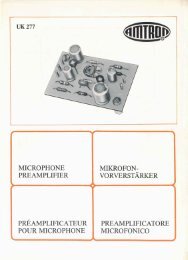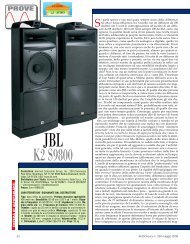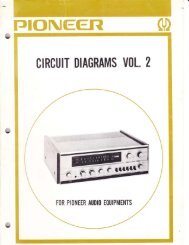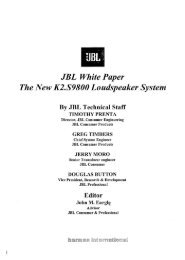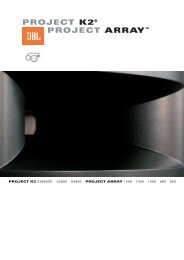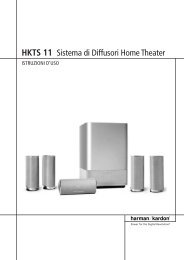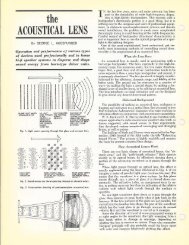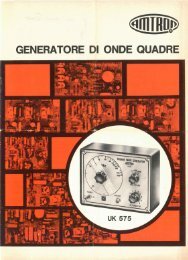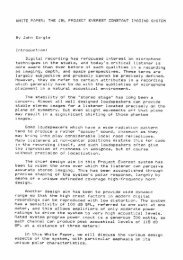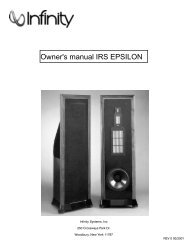MEASUREMENTS
MEASUREMENTS
MEASUREMENTS
Create successful ePaper yourself
Turn your PDF publications into a flip-book with our unique Google optimized e-Paper software.
Short Time Distortion<br />
• DEFINITION<br />
Short time distortions cause amplitude changes, ringing, overshoot<br />
and undershoot in fast rise times and 21 pulses. The affected<br />
signal components range in duration from 0.100 microsecond<br />
to 1.0 microsecond.<br />
For PAL systems, distortions in the short time domain are most often<br />
characterised by measuring K2T or K pu | se /b ar . These measurements<br />
are described in the K Factor section of this booklet (page 44).<br />
Alternatively, the aberrations in a T rise time bar can be described<br />
in terms of the "percent SD" method described in this section.<br />
• PICTURE EFFECTS<br />
Short time distortions produce fuzzy vertical edges. Ringing<br />
can sometimes be interpreted as chrominance information<br />
(cross colour), causing colour artifacts near vertical edges.<br />
Figure 28. A J rise time bar has a 10% to 90% rise<br />
time of nominally 100 nanoseconds.<br />
• TEST SIGNALS<br />
2T pulses are generally specified when K Factor and pulse-to-bar<br />
methods are used to characterise short time distortion. In order<br />
to use the "percent SD" method, however, a signal with a T rise<br />
time white bar is required. As shown in Figure 28, a T rise time<br />
bar has a 10%-to-90% rise time of nominally 100 nanoseconds.<br />
(See Appendix B for a discussion of the time interval T.)<br />
It is very important to make sure you are using a T rise time bar<br />
with the short time distortion graticule. Many common test<br />
signals have 2T rather that T rise times, and 2T bars are not<br />
suitable for this measurement. It should also be noted that T<br />
rise times cannot survive transmission, because they contain<br />
fast components which do not pass through the 5 or 6 MHz<br />
lowpass filter. Short time distortion measurements made on<br />
transmitted signals will therefore evaluate only those components<br />
in approximately the 200 nanosecond to 1 microsecond range.<br />
• MEASUREMENT METHODS<br />
Measurements of the undershoot, overshoot and ringing at the<br />
edge of a T rise bar are not generally quoted directly as a<br />
percent of the transition amplitude, but rather are expressed in<br />
terms of an amplitude-weighting system that yields results in<br />
"percent SD". This weighting is necessary because the amount<br />
of distortion depends not only on the distortion amplitude, but<br />
also on the time the distortion occurs with respect to the transition.<br />
Although results can be calculated from the time and<br />
amplitude of the measured ringing lobes, special graticules,<br />
conversion tables or nomographs are used in practice.<br />
30



